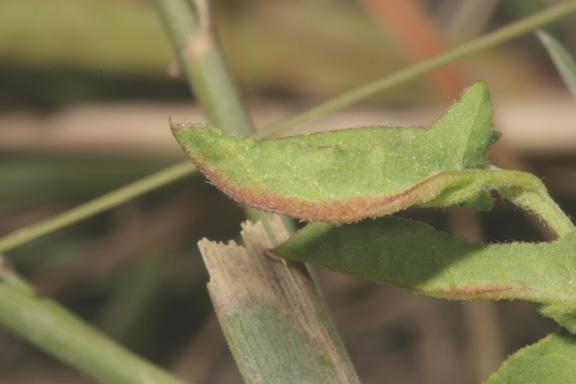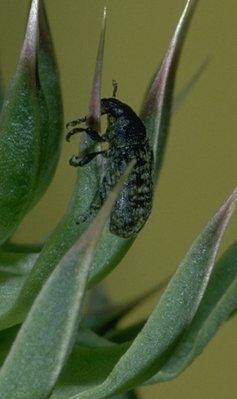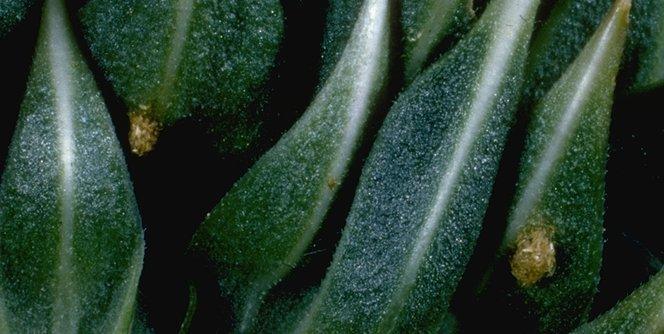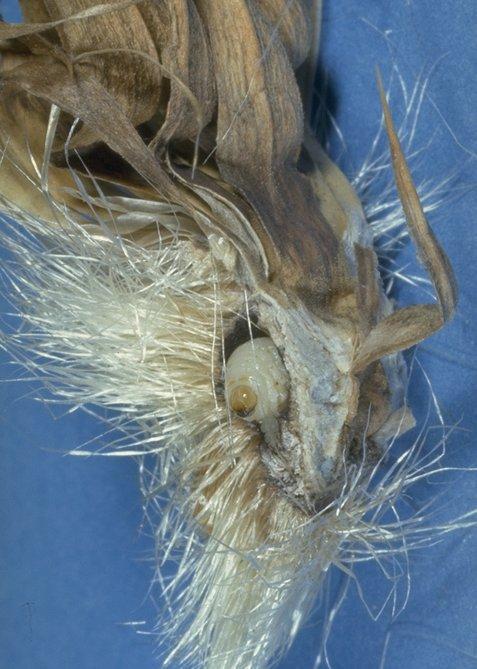Weed Control Agents
The Bindweed Gall Mite (Aceria malherbae) is a microscopic mite imported from southern Europe as a biological control agent for field bindweed. The bindweed gall mite feeds only on field bindweed and a few closely related wild plants. It causes the formation of gall-like growth of plant leaves. Infested plants have leaves that are thickened with a “fuzzy” texture along the mid-rib. In heavily infested plants, the shoots are misshapen and growth is severely stunted. To date this mite has been widely distributed in Colorado, Oklahoma, New Mexico and northwest Texas. The mite has been introduced into Kansas, but so far infestations are not well established (for information on its current status in Kansas link to the following web page Extension>Special Projects>Bindweed Mites). More information on this biological weed control agent can be found at: Managing Field Bindweed with the Bindweed Mite in Colorado and Biological Control of Field Bindweed in Oklahoma.

Bindweed Gall Mite Injury -- Photo by Phil Sloderbeck The Thistle-head Weevil (Rhinocyllus conicus) has been introduced into the United States from Europe to control musk thistle (Carduus nutans L.) which was accidentally introduced into the United States in the mid- to late-1800s. The adults are attracted to the thistles about the time thistles begin to bolt and females lay eggs on the bracts of developing flowers and covers them with chewed plant material. The grubs tunnel into the flowers and destroy the developing seeds. For more information on the establishment of this biological control agent see: Biological Control of Musk Thistle in Kansas

Thistle Head Weevil - Photo by Phil Sloderbeck

Thistle Head Weevil Eggs - Photo by Phil Sloderbeck

Thistle Head Weevil Larva - Photo by Phil Sloderbeck